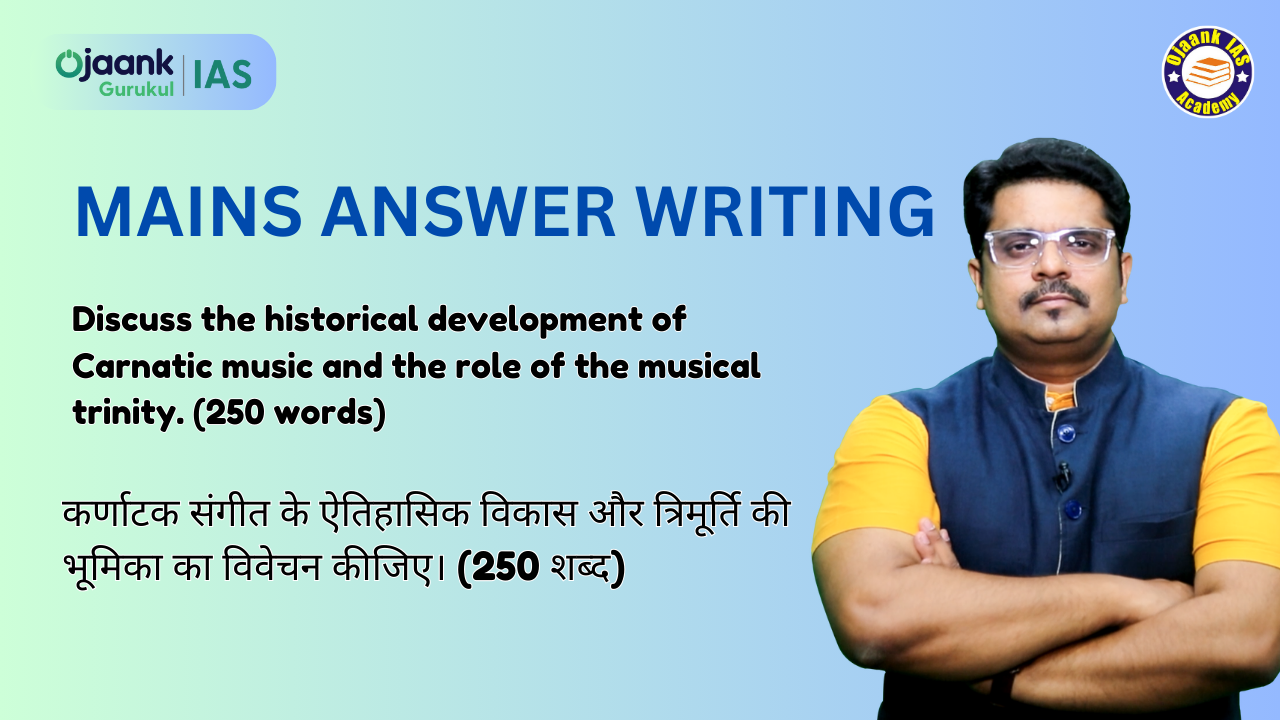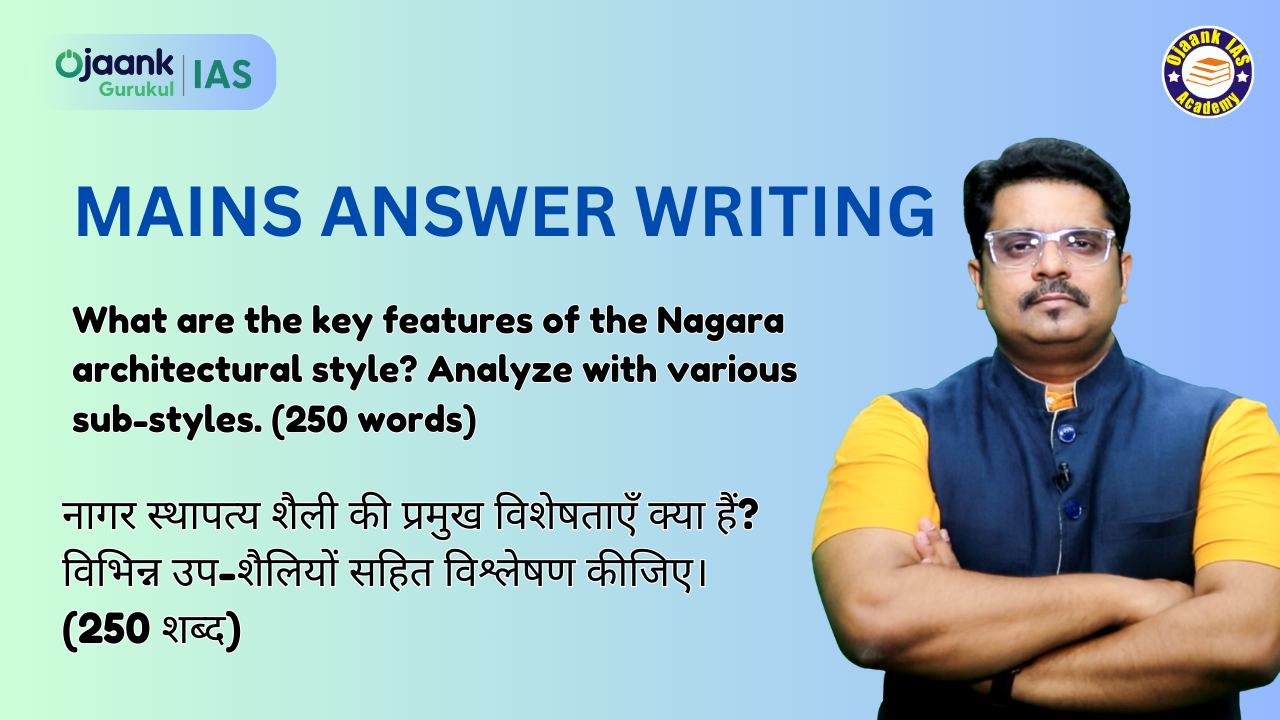Discuss the historical development of Carnatic music and the role of the musical trinity. (250 words)

I. Historical Development:
-
Roots of music can be traced to the Vedic period in the form of Samagana (chanting of the Samaveda).
-
Sangam literature mentions poetry and melodic elements.
-
During the Bhakti Movement (7th–12th century), Alvar and Nayanar saints integrated devotional poetry with music.
-
Vijayanagara period (14th–16th century) witnessed the flourishing of music under royal patronage and temple culture.
II. The Trinity of Carnatic Music:
-
Tyagaraja (1767–1847):
Composed thousands of kritis centered on devotion to Lord Rama.
Known for masterpieces like “Endaro Mahanubhavulu.”
-
Muthuswami Dikshitar (1775–1835):
Composed in Sanskrit, introduced innovations in raga organization.
His compositions are dedicated to deities like Devi, Ganesha, and Vishnu.
-
Syama Sastri (1762–1827):
Master of rhythmic complexity and emotional expression.
His works mainly focus on the worship of Goddess Kamakshi.
III. Modern Contributions:
Artists like M. S. Subbulakshmi, Semmangudi Srinivasa Iyer, and T. N. Krishnan gave Carnatic music international recognition.
IV. Conclusion:
Carnatic music is not just an art form but a medium of spiritual realization. The musical trinity elevated it to a confluence of scripture, devotion, and aesthetic beauty, taking it to the global stage.
Copyright 2022 power by Ojaank Ias



-1745063980123.jpeg)

